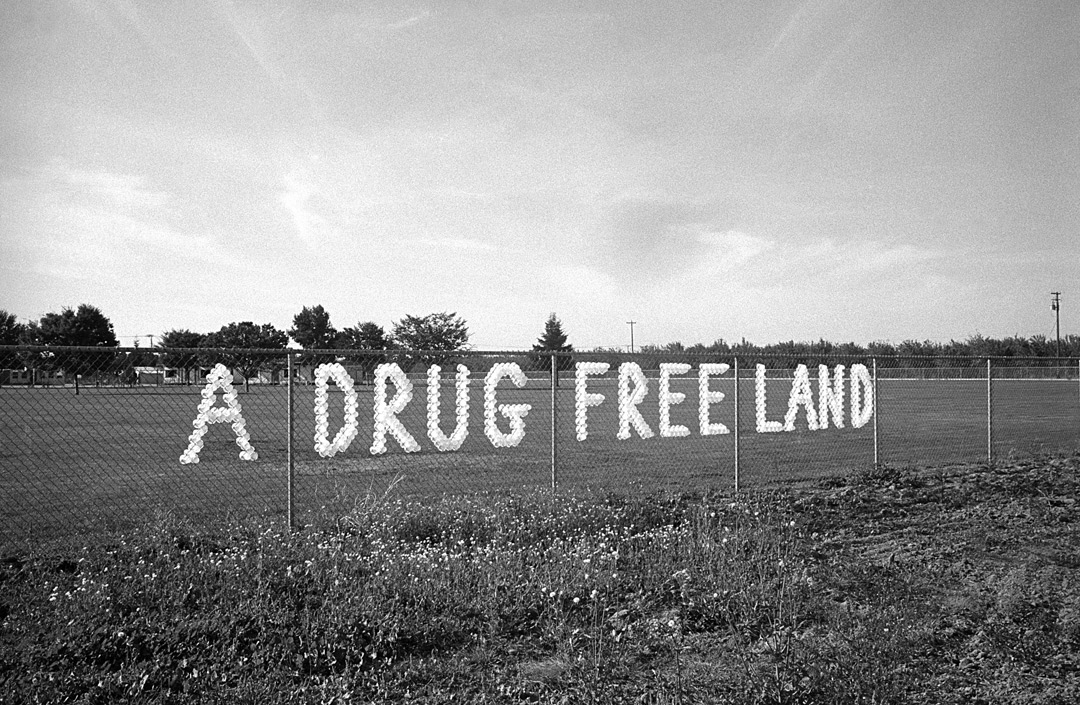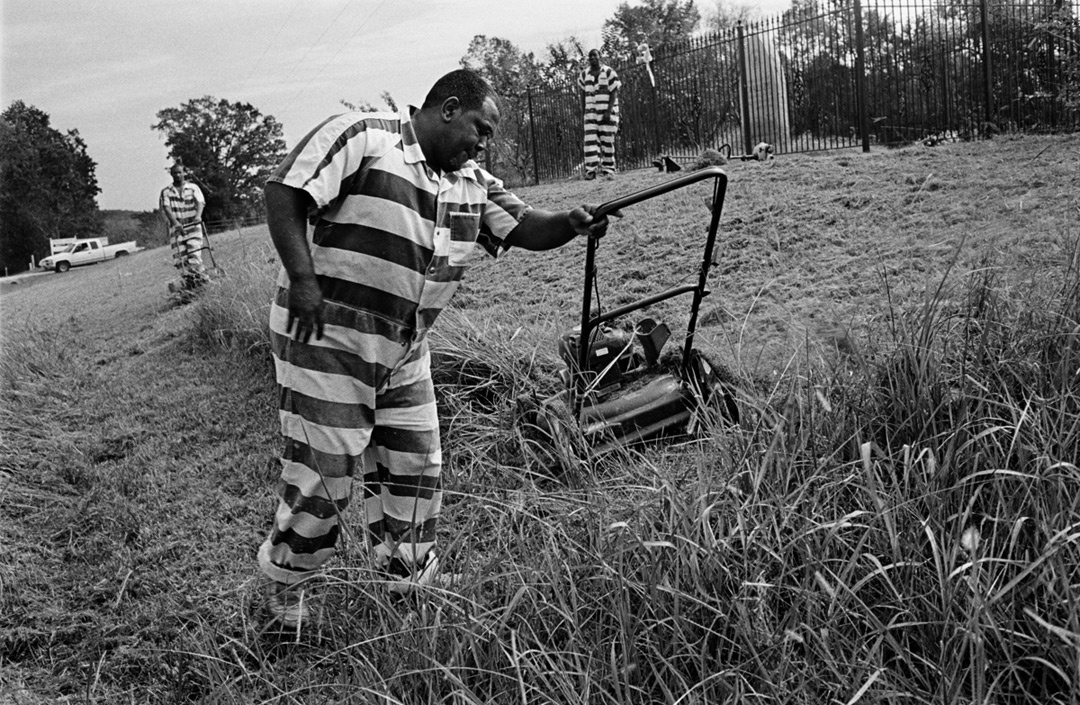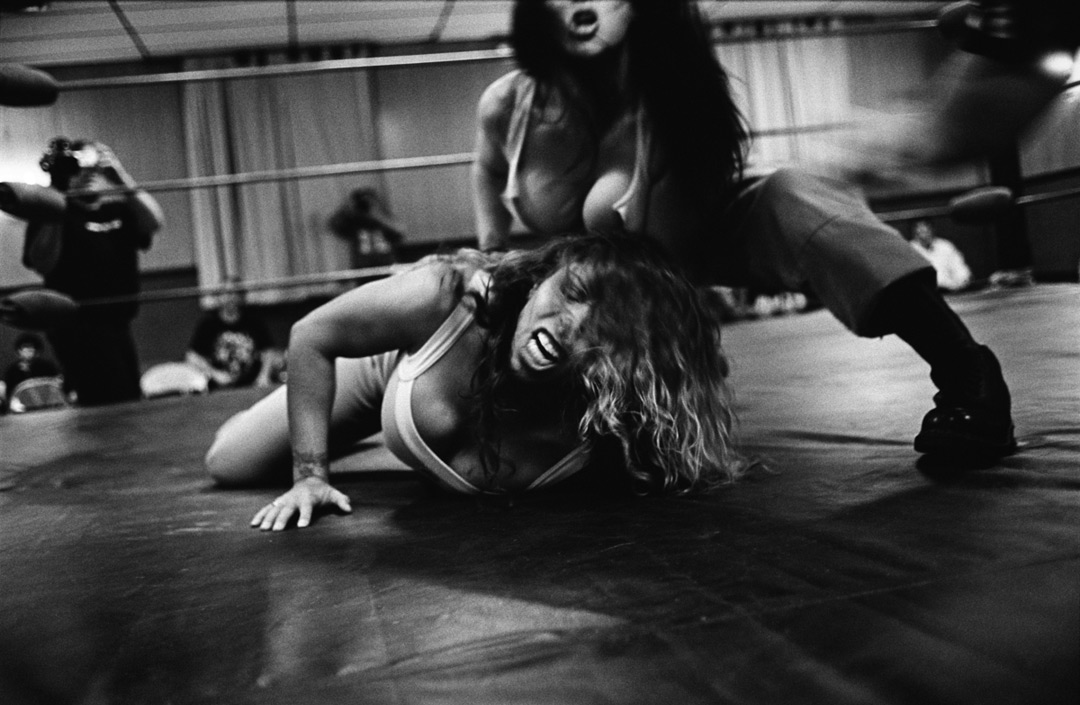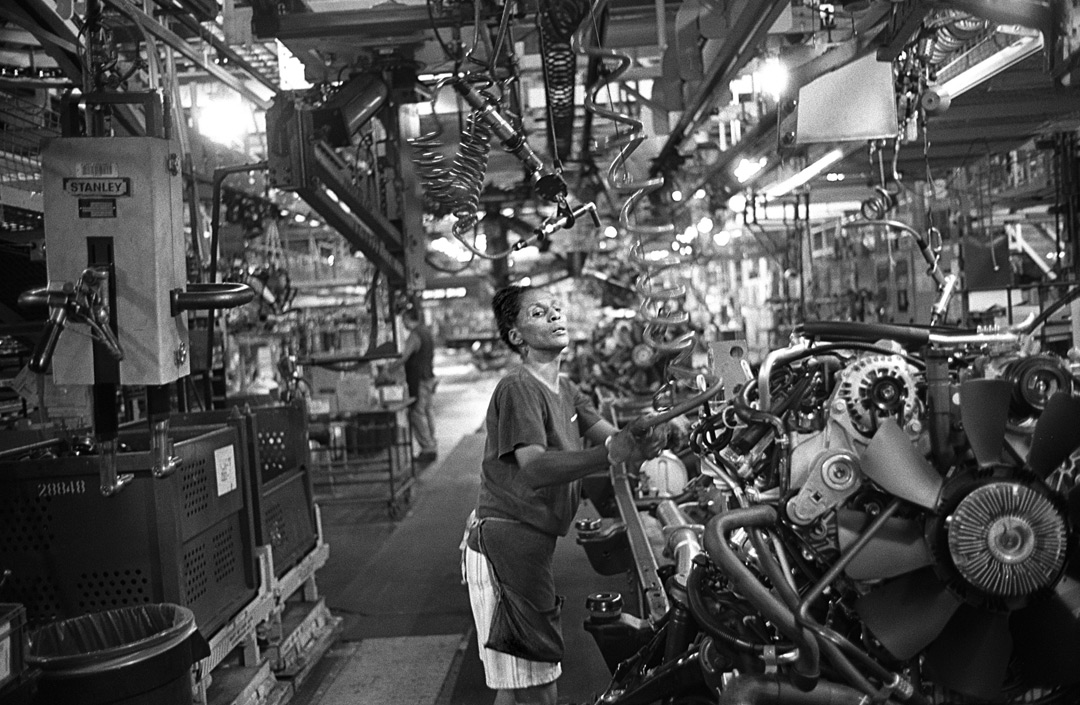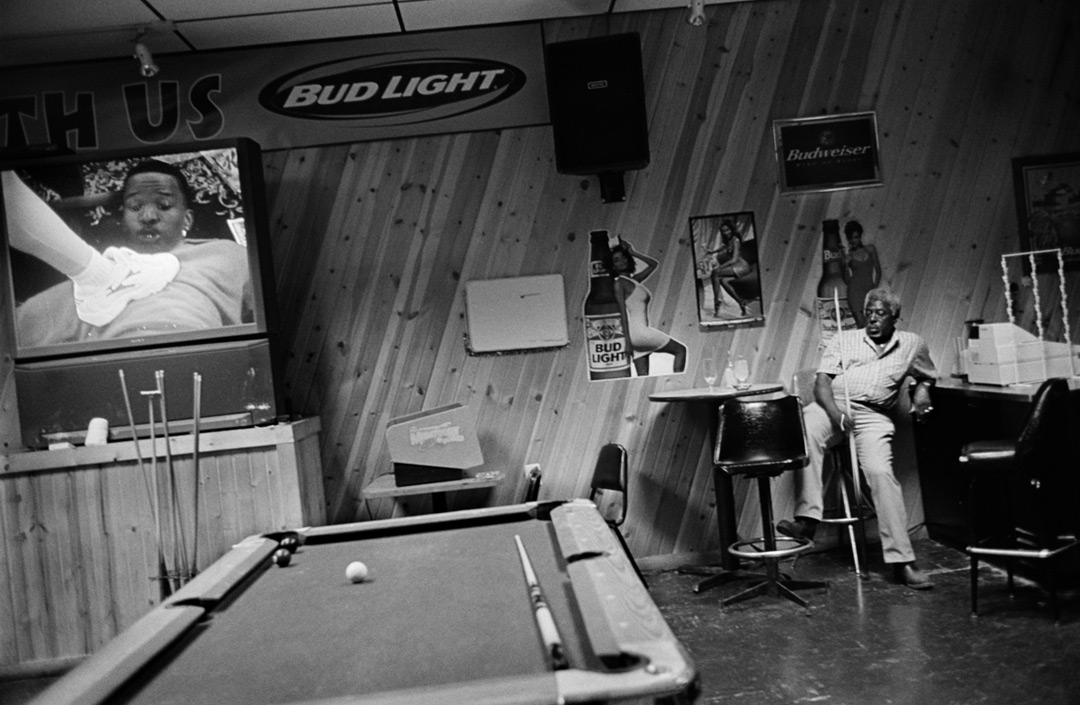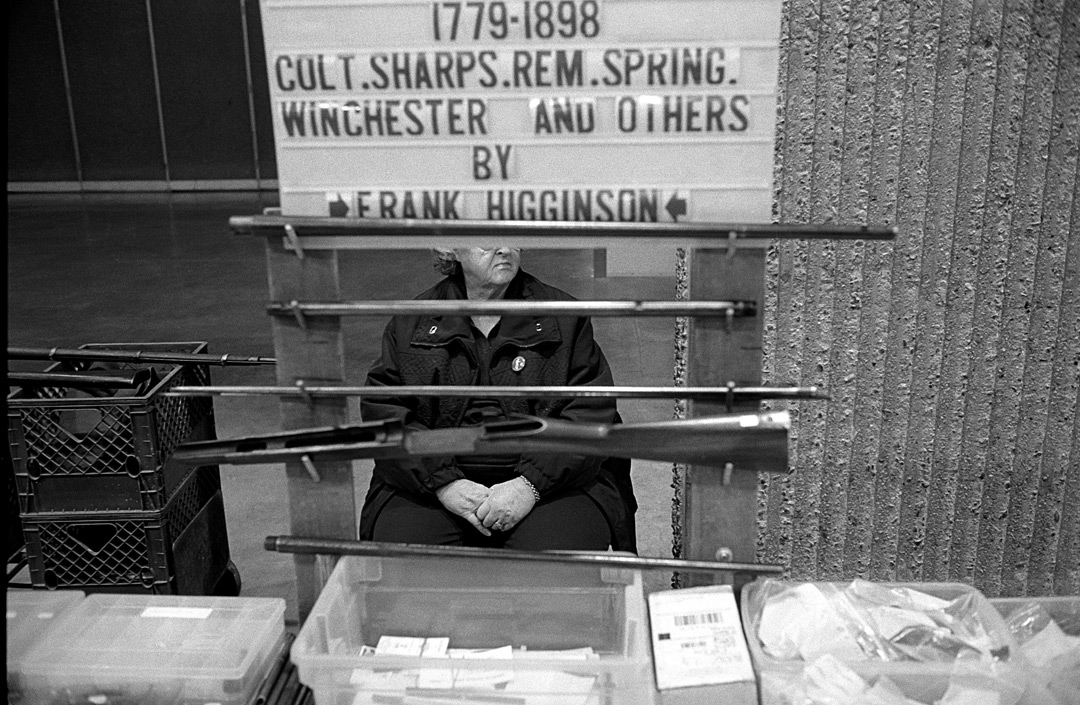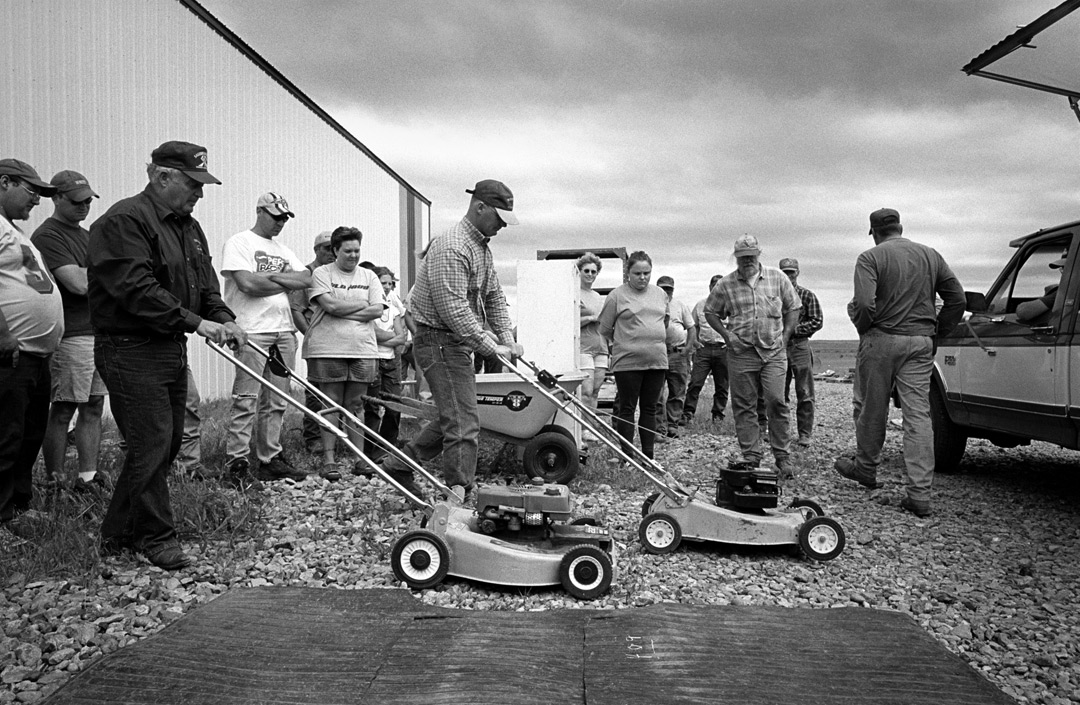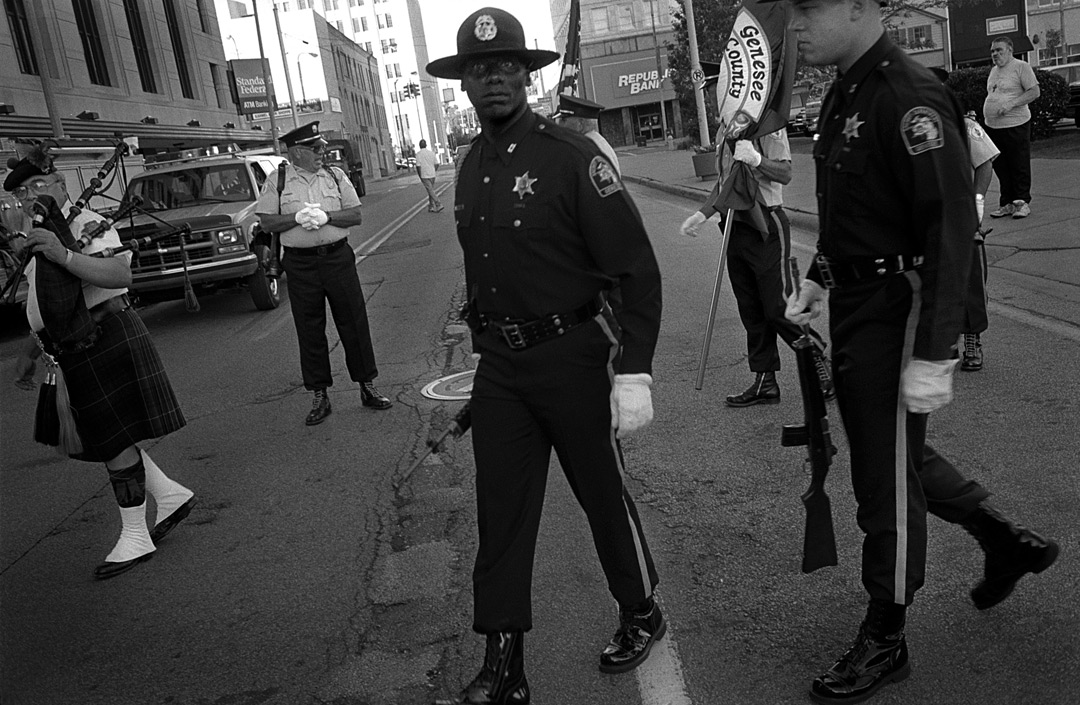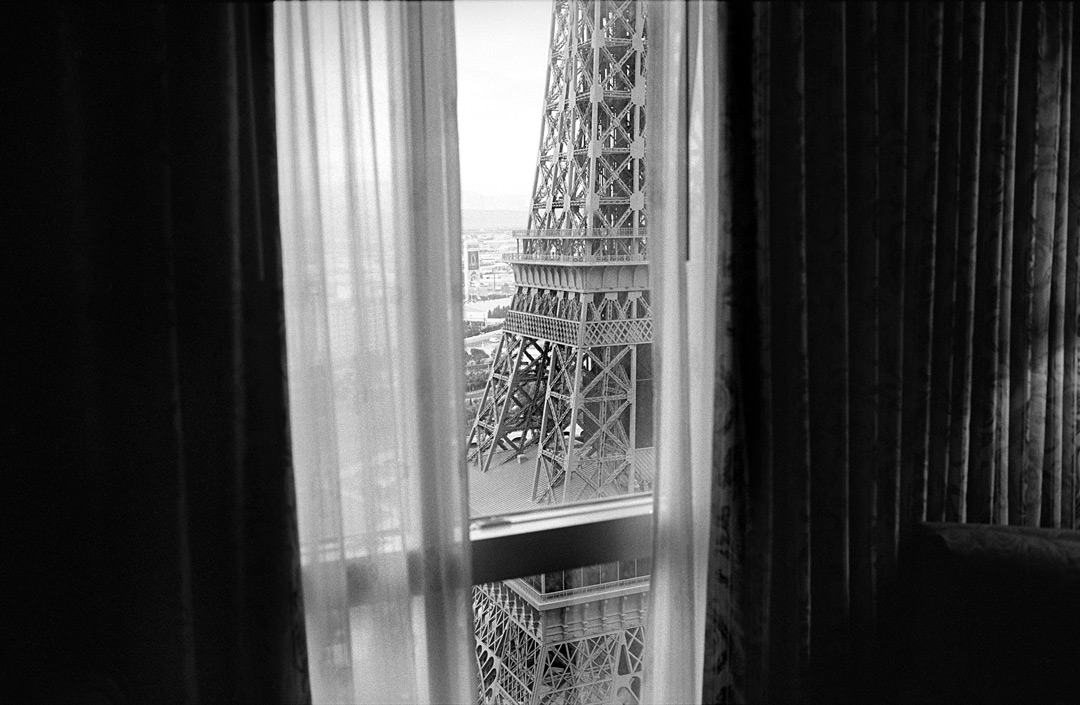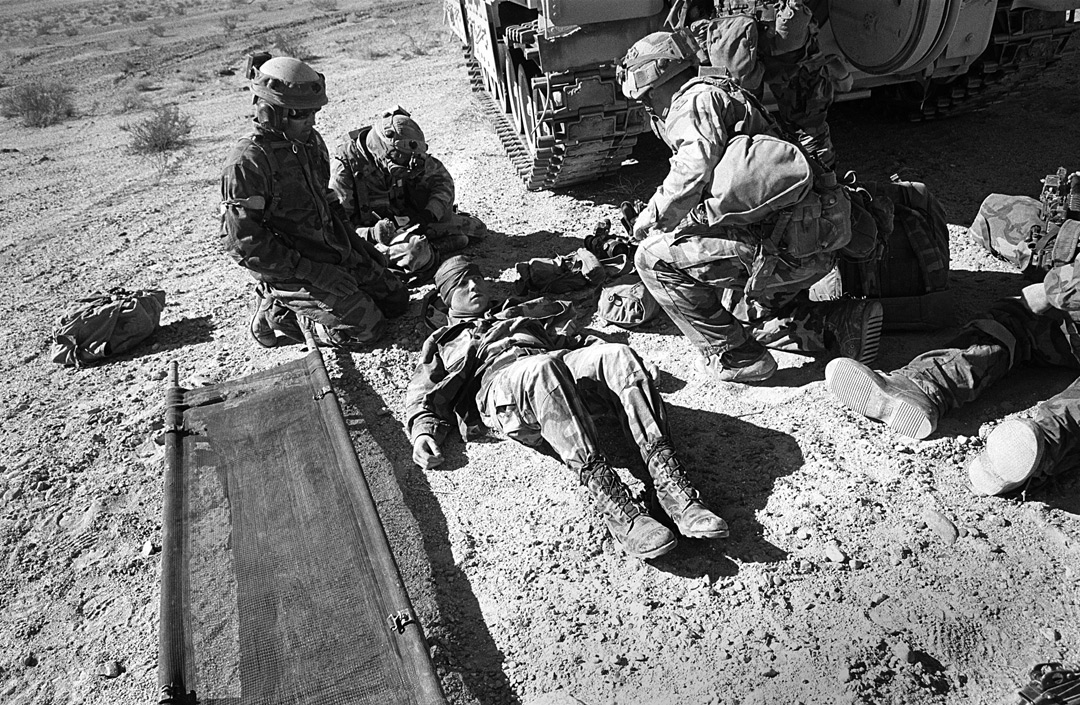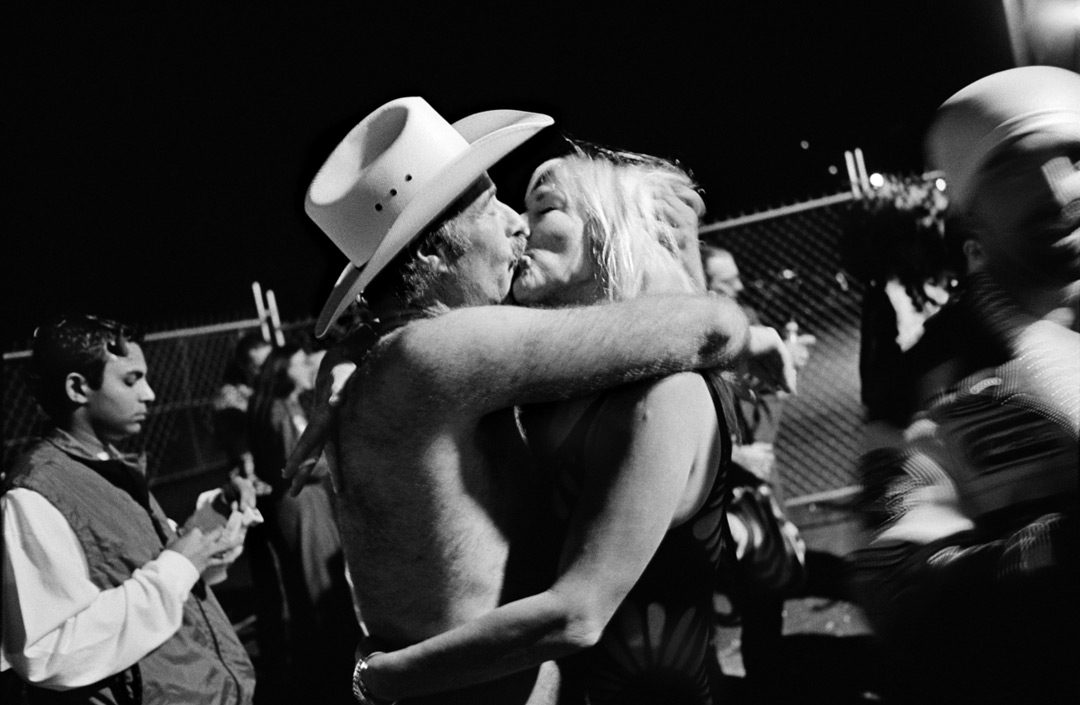Alle Fotos aus dem Buch „A Drug Free Land“ von Thomas Kern
published by Edition Partick Frey, ISBN: 978-3-905509-90-8
Dieses Interview aus dem Jahr 2011 ist zuvor in leicht veränderter Form auf der Seconds2Real und American Suburb X erschienen.
Christian Reister: Thomas, how and when did you start photographing?
Thomas Kern: I became fascinated by photography at an early age. At home, there was a camera, but it was rarely taken out of the closet, which lead to the fact that the colorfilms inside that camera were only processed after years and the pictures often had this yellow tint – hence maybe my scepticism towards color photography… When I was 15 years old my art teacher asked me if I was interested in having an enlarger. It was not even his, but belonged to an artist friend of his, who was trained as a photographer, but turned painter, which was an early hint at me that photography was not a mean in itself, but rather another way of expressing yourself through art. I gracefully accepted the gift and set up my first darkroom in the laundry room of my parents house. There was a light tight closet under the basement stairs where I could fill my rolls into the tank.
I was immediately hooked and fascinated by what happened in the darkroom. The reappearence of things I had seen or imagined and the combination of the two whenever holding up a camera still amazes me until today. After highschool I applied for entry to the photography department of the Kunstgewerbeschule in Zürich. I wasn’t accepted and subsequently started working as an assistant to a fashion photographer, later more studio and stillife. Later I entered an apprenticeship, still taking classes at the Kunstgewerbeschule. During this time I learnt the whole craft side of photography. At the end of my education I knew that it wasn’t advertising and the world of fashion that would give me the kick. I was already on track to get into the world of photojournalism. At the time I was also working as a camera assistant for documentary film projects and as camera man for some television productions.
In 1989 I started working full time as a photojournalist and one year later I was the co-founder of the photographers agency lookat photos, a project that acoompanied me for the next 15 years. My first subject of choice was the situation in Northern Ireland. From there on I embarked on a journey through most of the Middle East and from there closer to home back to the Balkans, work that resulted in my first collaboration fort he Swiss monthly cultural magazin DU. Three ways to Isfahan was the next, a joint project with fellow photographers Samer Mohdad and Daniel Schwartz. Then came Haiti fort he first time, something I continue working on up until today. From 1998 until 2006 I lived in San Francisco, that’s where my answer to your next question starts…
Christian Reister: What led you to your book “A Drug Free Land”? Why America?
Thomas Kern: Early 2001 the dotcom bubble popped. Living in San Francisco, at the door step of Silicon Valley, this immediately translated into a loss of assignments, The bread and butter jobs I needed were gone from one day to the other. San Francisco was expensive enough, I was struggling to make ends before, but without these jobs the situatione became critical. In September followed the attack on the Twin Towers, and the America I believed to know started falling apart. At this point I was determined to start a personal project somehow built on the experiences and years we had already spent in the United States, 9/11 – with all it’s well known and widely discussed consequences, the subsequent war on terrorism and the far-reaching restrictions on civil liberties, changed everything.
I was appalled at a self-censoring press and by the almost undisputed acceptance of embedded journalism. I was disgusted at Abu Ghraib, even if it did not reflect what Americans think America is really about, it still did reflect what hundreds of millions of other people thought America is about, and that matters. America – 37 millions live in poverty; 60 millions simply get by just above the poverty line. 50 million people are without health-care. Yet at the same time the United States invests 713 billions in the military, including a nuclear arsenal and the ongoing operations in Iraq and Afghanistan. All this weighed heavily on the land.
My photography has always aspired to go beyond the obvious and to somehow capture the invisible. The photographs I was searching for were documentary but rest ambiguous and inconclusive at the same time. I was not trying to make a final statement. The images come from heart and mind alike. They are wrought from strong convictions shaped by my own experience of living in the midst of a sometimes deceitfully familiar America – a very personal departure point to explore a very public subject. There was no common language for the confusions and fears triggered by 9/11, the ongoing wars and a crumbling economy. It was my ambition to give this America a face, to create a document, a visual commentary on the state of the nation. I was interested in the cracks between the personal experience and the state rhetoric, between the individual and the national order of things. I tried to find my images in the fabric of daily American life. I photographed people at their homes, at work, together with their friends, captured them shopping and while walking the streets. It was all out there. The strength and relevance is in the ability to select the permanent from among everyday reality.
Christian Reister: Some of your photographs are taken in a more reportage-like style, most of them more in the tradition of Street Photography – the scenes seem unstaged and rather found than wanted. How would you describe your approach?
Thomas Kern: To a certain extend my images are all found. At an early stage there is always some planning. I am a strong believer in research. Reading is important. The entire body of work in front of us somehow goes back to a text passage I found in a travelogue written by Alexis de Tocqueville in 1834. When working for A DRUG FREE LAND there was usually a rough itinerary or some kind of a destination, those way points I mostly chose according to historical significance, sometimes for their geographical location and sometimes just for their names, but that’s when I am already on my way. The research, the reading and the practical preparations must fade away into the background, once I have entered the picture making mode, it is the subconscious that finally triggerst the alarm when an image presents itself before me. It is as much seeing as recognizing the scene. When actually taking images I like to be slow. Driving is nice, the windshield can act as a frame and help you to see the images, but usually driving is too fast and the images gone by to quick. I prefer walking, when staying in Flint, Michigan for a while, I bought a bike in a pawnshop. That’s good transport too.
Again, I prefer to find my images as opposed to searching for them. I like to be surprised, as a photographer I don’t like to control a situation. I also could never work digital on such a project. I don’t want to see what I am doing, I like get up in the morning and see the world untainted. The images I do have to settle down to the unconscious, where they mingle and mix with the research, the reading, my memories and experiences while traveling.
Christian Reister: You are a Swiss citizen, you travelled countless states of America and you are taking your photographs with a Leica, black and white and analogue. Over fifty years ago there was another Swiss, Robert Frank, who has set cornerstones for generations of photographers with his book „The Americans“. Where do you see parallels and differences?
Thomas Kern: Of course I did all this to become a future inspiration to generations of photographers to come. Just like Robert Frank… Seriously, when starting out as a photographer I was interested in a socially conscious and advocating photography, I was much more drawn towards people like Gilles Peress, Philip Jones Griffiths, Eugene Richards. I considered Robert Franks photography (maybe more so it’s perception) as too artsy, maybe too poetic. I was maybe much closer to his photography when I really started out working with the media, just exploring, working in the darkroom, of course not closer to his quality of work, but closer to the concept.
I somehow feel like I have done a full circle. I had to abandon that poetic quality and the openness in order to make my photography useable. Most of my photographer’s life I have worked as a photojournalist. This has certainly made an imprint on me and my way of seeing. But the past few years I have discovered the need to make images with less obvious statements and giving them a much more universal and timeless quality. In this sense I feel like I have come much closer again to Frank’s photography. Today I look at my book and I see very little resemblance with Franks work, but I do see a frightening similarity of the undelying subjects we are both treating, loneliness, the american dream, racism… and maybe a certain melancholy too.
Christian Reister: The big American cities like San Francisco, Los Angeles or New York play only a marginal role in your book. Why did you focus on the rural regions?
Thomas Kern: It is a conscious decision. I lived in San Francisco, a beautiful city, cosmopolitain, open and politically liberal. Most of these qualities are not necessarily representative of the rest of America. The two coasts, San Francisco, Los Angeles and on the East coast New York and maybe Boston are totally over represented in our perception of America. It is also not my love for landscapes, but it was the idea to visualize how the majority of Americans live.
Christian Reister: Do you always have a camera with you and are you photographing on the streets anyway or are you only working with a clear concept or targed in mind?
Thomas Kern: I used to always have a camera with me. But gradually less and less, Although lately I am making an effort to go back to that habit again. I am sure it has to do with the kind of work I’ve been doing over the past twenty years, photojournalism was of course mostly project oriented. But I suspect there are also other reasons, more to do with my self image, my identity as a photographer. When starting out, it was good to always carry a camera, because therefore I was a photographer…
Today I know photography is my profession, I haven’t done anything else for the past two decades. Even DRUG FREE LAND was mostly done in a project oriented way. I have a family, responsibilities and a life apart from photography which forces me to find some kind of a balance and efficiency in my work. I can’t afford to aimlessly wonder around and I do not subscribe to esoteric theories of how to get to my images. I talked about this before, the whole framework I need to go out in order to be able to find my images.
Christian Reister: Is there a new project you are currently working on?
Thomas Kern: I am still not sure whether I have come to an end with America after having published the book. Maybe yes, maybe no. I also keep on working in Haiti, especially now, after the earthquake of last January, a whole new chapter has opened itself in front of me. To publish Haiti is much more difficult. Working with Patrick Frey for A DRUG FREE LAND was great and a wonderful experience. The fact that this is a small publisher with a limited distribution was not so relevant for DRUG FREE LAND. It is a much more personal goal to have this published, and I am happy with it, as it is.
Christian Reister: If you could chose three photobooks for a residence on a lonely island – which ones would you choose?
Thomas Kern: FAIT by Sophie Ristelhueber
BELGICUM by Stephan Vanfleteren
ANTLITZ DER ZEIT by August Sander
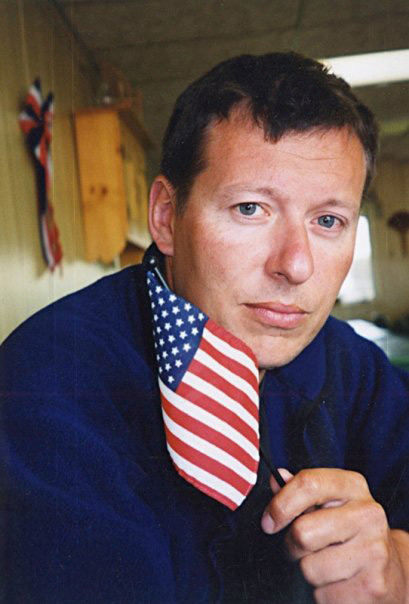
Thomas Kern wurde 1965 in Brugg/Schweiz geboren. 1984-1987 Ausbildung als Fotograf, 1988-89 Kamaeraassistent beim Fernsehen DRS, Besuch der Fotografieklasse der Kunsthochschule Zürich. 1990 Mitbegründer der Fotoagentur Lookat in Zürich, 1998-2006 als freiberuflicher Fotograf in San Francisco. Lebt und arbeitet in Möriken / Schweiz (Quelle: Fotografenwiki.org)
